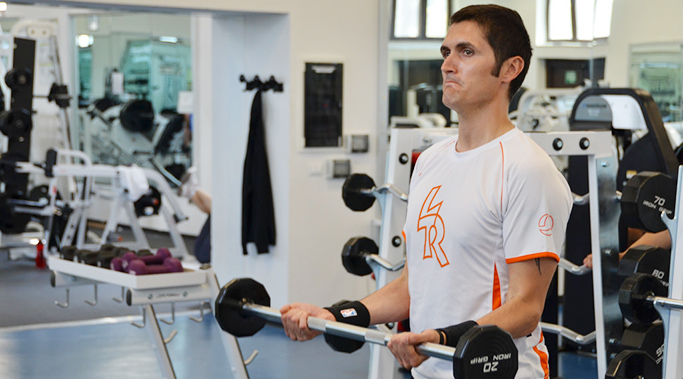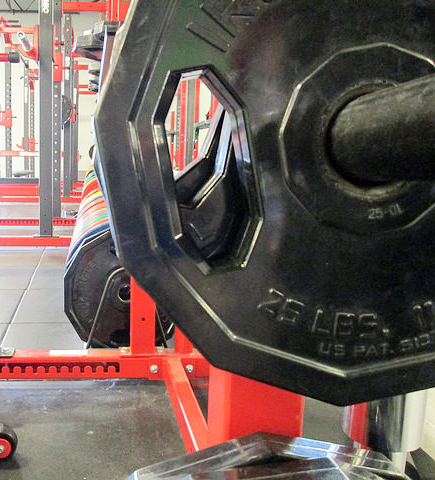Taking charge of your strength program design
Seven concepts of effective training protocols

With athletic budgets getting smaller and smaller, it is up to coaches to find ways to enhance their programs while staying within those financial constraints.
When it comes to conditioning, I’m seeing more than a few coaches adopting new methods. They either take over the training duties themselves, delegate them to an assistant, or allow their athletes to go to an outside source. There are arguments for and against those scenarios.I had an opportunity to talk with a local high school coach, who obtained his training protocol from a website, copied it and taped it on his wall. On its face, that can be a scary proposition to some. I saw a lift that I thought was really advanced for the demographic he was working with, and when I asked him about it, he said he didn’t know what it was.
When I asked the logical follow-up question, “How do you teach it?” He said, “I don’t.”
My first thought was, “How can we make this a win-win for the coach and his athletes?” I suggested that the coach may want to reach out to the local colleges and identify a person who is skilled in program design and implementation. There are often students who are willing to serve as interns. If you believe that pay may be a problem, think outside the box for ways to compensate someone.
Compensation isn’t always about money. I once had a coach who allowed me to work with his program, and I knew the budget was tight and money wasn’t a big issue for me. The season ended with a conference championship — which was payment enough— and the coach thought enough of me to make sure that I received one of the jackets awarded to the team for its achievement.
» RELATED: Building a high school strength program
Sometimes the conditioning duties are delegated to an assistant who, just because they go to the gym everyday, is chosen to run the program. But the program leader must make sure this person has the team’s best interests in mind. Most of us know someone who talks about how many athletes they have made throw-up or leave the gym so sore that they have trouble walking. Neither of these things speaks to the quality of the coach or the protocol.
Remember, you are preparing athletes to compete at a level that they may not have believed possible. You don’t need to prove how tough you are.
 The other scenario is that your athlete is training with an outside source. This can be a recipe for disaster if the athlete’s trainer is constantly telling them how great he or she is. When that athlete rarely gets minutes during the game, you run the risk of having your authority undermined.
The other scenario is that your athlete is training with an outside source. This can be a recipe for disaster if the athlete’s trainer is constantly telling them how great he or she is. When that athlete rarely gets minutes during the game, you run the risk of having your authority undermined.
The trainer may start to question your decisions, thereby causing your athlete to distrust you as a coach. One of the things I’ve observed is trainers sometimes count on their athletes to drop 30 points a game, hence creating buzz about their ability to get athletes ready. If the trainer’s pupil isn’t receiving playing time, that coach could be cutting into their profit margin. I appreciate a coach who doesn’t feel as though they must micromanage their athletes around the clock, but it’s imperative that you control your message.
With those thoughts in mind, coaches may decide to run their conditioning programs on their own. Here are seven concepts an effective training protocol is based upon.
1. Create goals.
All programs should be goal oriented, and those goals should be based in reality. When setting goals, there are many variables that must be considered and optimized. These include the investment of time and effort, nutrition and diet, sleeping habits, availability of facilities, and equipment.
2. Create balance.
Training protocols should be balanced in terms of developing or maintaining all of the components of fitness. Your training protocol should consist of eight to 10 full range-of-motion exercises — one for each major muscle group — and be worked in the order of largest to smallest.
3. Design with purpose.
Training protocols should be designed to either enhance specific components of fitness or introduce various exercises to enhance the total fitness experience, flexibility or agility.
4. Progressive overload.
For continued and long-term success, progressive overloads may be the way to go. Progressive overload is the process of adding weight to the load after each successfully completed set. One thing to look out for is the “too much, too soon” syndrome. This can be a precursor to overtraining.
5. Rest & recovery.
This is a key component to any training protocol, because it allows you to optimize the effects of strength training. Recovery intervals may range from 30 seconds to three minutes depending on the activity and intensity. I’m a believer in giving each worked body part 48 hours to recover, depending on the intensity of the training sessions.
6. Change it up.
When it comes to training, I like to keep my athletes guessing. I want them to come into our facility with a sense of wonderment. I want to fight boredom, and if I get the sense that they’re bored, I have no problem scrapping the plan and going off script. It helps to have access to great coaches and a group of engaged athletes.
7. Maintain consistency.
Participation in regularly scheduled training sessions is the single most important factor in determining the athlete’s fitness levels. Regularity and consistency goes a long way toward creating the type of stress the body desires for positive change.
This is just a small checklists that coaches can use to assist them in creating a training protocol that leads to positive changes in your athletes.
Graig White is the owner and president of Team Conditioning Systems. He also is the director of player development for the Philadelphia Spirit American Basketball Association.


